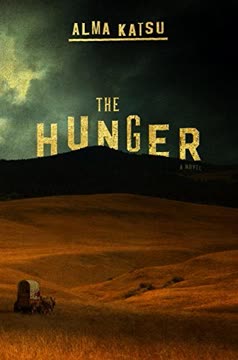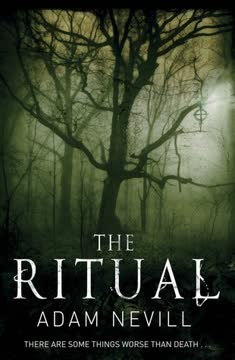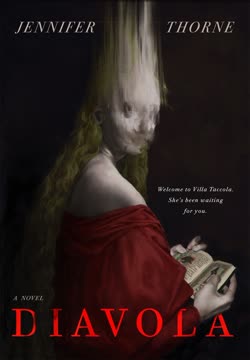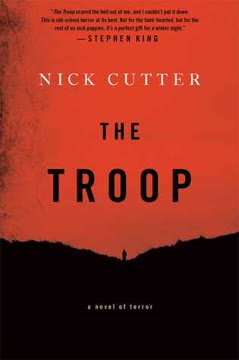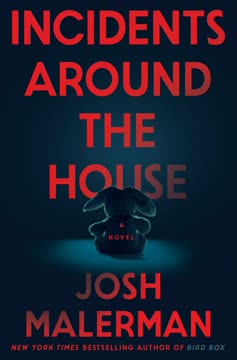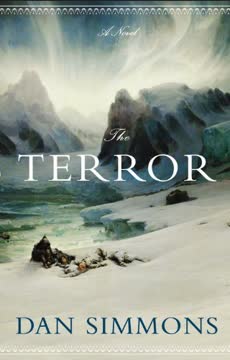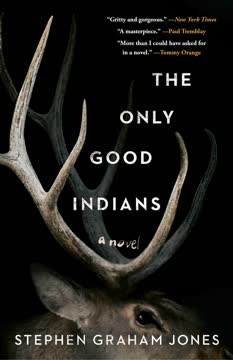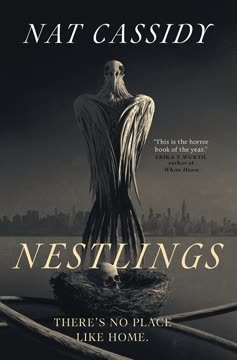Plot Summary
Prologue: Winter's Last Survivor
In the aftermath of a brutal winter, a rescue party trudges through deep snow to the site of the Donner Party's last camp. The land is eerily silent, the snow hiding secrets and the stench of death. The team finds the cabin deserted but haunted by a sense of presence, scattered with human remains—teeth, vertebrae, and bloodstained relics. The door opens by itself, as if inviting them into the aftermath of something unspeakable. The prologue sets the tone: this is not just a story of survival, but of something darker that lingers in the snow.
Blood on the Prairie
Charles Stanton, a solitary and haunted man, prepares for another day on the wagon train. The prairie is dry, the grass short, and the party is already behind schedule. Edwin Bryant, Stanton's friend, voices his fears: they are moving too slowly, and the land is unforgiving. The disappearance of a young boy and the party's slow progress foreshadow disaster. The landscape itself seems to conspire against them, and the first hints of something unnatural—wolves, missing children, and blood—begin to unsettle the travelers.
Secrets and Superstitions
Tamsen Donner, beautiful and enigmatic, walks the trail, gathering herbs and attracting both admiration and suspicion. She feels trapped by her marriage and the journey, haunted by what she's left behind. The women gossip about missing children, wolves, and Indians, but Tamsen knows evil can come from within. Her daughters are her only solace, and she is determined to protect them by any means, even as she senses a growing darkness both outside and within herself.
The Missing and the Dead
The missing boy is found—mutilated, his body stripped to the bone. The men gather, shaken and searching for answers. Was it wolves, Indians, or something worse? Bryant suggests the killer could be among them, sowing distrust. The party's leadership fractures as George Donner and James Reed argue over who should lead. Stanton, haunted by his own past, feels the invisible thread of fate tightening. That night, Tamsen seeks comfort in Stanton's arms, and their secret tryst is witnessed by Elitha Donner, setting in motion a chain of guilt and fear.
Letters, Legends, and Warnings
Edwin Bryant writes home from Fort Laramie, describing the party's leaders and the growing unease. He hears tales of a savage tribe, the Anawai, who sacrifice humans to appease a demon near Truckee Lake. Bryant's curiosity is piqued, and he resolves to investigate, even as he warns Stanton of the dangers ahead. The party splits, with some taking the risky Hastings Cutoff, lured by promises of a shorter route. The seeds of disaster are sown in letters, legends, and the stubborn hope of the pioneers.
The Cutoff Decision
At the Little Sandy River, the party splits from the main wagon train, choosing the untested Hastings Cutoff. Stanton feels isolated, missing Bryant and wary of the new leadership. A picnic meant to boost morale only highlights the party's divisions and the growing hunger. Mary Graves and Stanton share a moment of honesty about their pasts, but the shadow of Tamsen's scratches on Stanton's neck and the party's slow progress hint at deeper wounds and dangers to come.
Hunger and Hostility
James Reed inventories his dwindling supplies, worried about the party's future. Tensions flare as children are caught drinking stolen whiskey, and Reed's attempts at leadership are met with hostility. Keseberg, Snyder, and others challenge Reed's authority, and the party's unity frays. Margaret Reed confronts her husband about his combative nature and the reasons for their journey, revealing the personal demons that haunt them all. Hunger gnaws at the party, both physically and psychologically.
The Indian Guide's Tale
Bryant, traveling ahead with a Paiute guide named Thomas, hears chilling stories of the Anawai and their wolf spirit. The guide is terrified, warning of a contagious bloodlust that turns men into monsters. Bryant's group is attacked in the night, and Thomas disappears. At Fort Bridger, the Donner Party finds the fort nearly deserted and receives conflicting advice about the cutoff. A wild, diseased man attacks Mary Graves, and the party's sense of safety is shattered. Thomas, the Indian boy, is found and forced to guide the party, despite his warnings of bad spirits ahead.
Fort Bridger's Shadows
The party lingers at Fort Bridger, beset by rain, lice, and infighting. Elitha Donner, sensitive to spirits, brings food to Thomas and feels the weight of voices in her head. The party finds a note from Hastings warning of impassable terrain, but pride and desperation drive them forward. Stanton and Reed volunteer to find Hastings, encountering a stranded wagon party and a terrified, broken Hastings who speaks of something unnatural stalking them. The party ignores the warnings, pressing into the mountains as the sense of doom deepens.
Confessions and Curses
Flashbacks reveal the sins and secrets of the party members: Jacob Wolfinger confesses to his wife Doris about a deadly tonic he helped sell, linking their fate to Tamsen Donner. Elitha's voices grow louder, and she contemplates drowning herself to escape them, only to be saved by Thomas. The party's pasts—affairs, betrayals, and curses—intertwine with the present, suggesting that the evil stalking them is both supernatural and born of their own failings.
The Voices of the Lost
As the party struggles through the mountains, food runs out and tempers flare. Halloran, once sickly, recovers miraculously but becomes increasingly erratic and violent. Tamsen, accused of witchcraft, is both feared and needed. Elitha's voices become unbearable, and she attempts suicide, only to be rescued by Thomas. The party's isolation and fear make them easy prey for both human and inhuman threats, and the line between sanity and madness blurs.
The Trail of Monsters
The party encounters the remains of an Indian boy sacrificed to the wolf spirit, and the men debate the nature of the evil stalking them. Halloran's transformation is complete—he attacks Tamsen, driven by an insatiable hunger, and she kills him in self-defense. The party is beset by disease, violence, and the growing realization that something unnatural is hunting them. The snow begins to fall, trapping them in the mountains as hope dwindles.
Madness in the Mountains
The party is trapped by snow at Truckee Lake and Alder Creek. Food is gone, and the cattle are slaughtered. Disease spreads, and the young and weak succumb first. Madness takes hold—children and teenagers turn violent, and the survivors are forced to confront the unthinkable: eating the dead to survive. Keseberg emerges as a sinister figure, hoarding food and bodies, and the party's moral boundaries collapse under the weight of hunger and fear.
Halloran's Transformation
Those bitten or attacked by the monstrous creatures begin to change—first Halloran, then others. The disease is not just physical but spiritual, turning men into predators. The survivors realize that the monsters are not wolves but infected humans, driven by a supernatural hunger. The fires that once offered safety now serve as a last defense against the encroaching darkness. The party's numbers dwindle, and trust is shattered.
The Sins of the Fathers
Flashbacks reveal the origins of the curse: Keseberg's uncle, a prospector, brought the disease to the mountains years before. The Anawai tribe's sacrifices were desperate attempts to contain the evil. The party's own sins—adultery, betrayal, violence—mirror the supernatural threat, suggesting that the hunger is both a literal and metaphorical inheritance. The survivors are forced to confront not just the monsters outside, but the darkness within themselves.
The Descent into Snow
The snowshoe party, Forlorn Hope, sets out to find help, leaving the weakest behind. Stanton, bitten and infected, sacrifices himself to save Mary Graves and the others. Tamsen stays with her dying husband, then makes a desperate journey to the lake camp, only to discover the true horror: Keseberg has been feeding the living with the dead, keeping the monsters at bay by becoming one himself. The survivors are reduced to their most primal instincts, clinging to life as the world around them freezes and decays.
The Breaking of the Party
As the snow begins to melt, James Reed returns with a rescue party, finding the survivors emaciated, traumatized, and forever changed. The valley is silent, haunted by the memory of what happened. The true nature of the evil—part disease, part human failing—remains ambiguous. The survivors are left to reckon with what they have done and what they have become, as the world outside moves on, indifferent to their suffering.
The Last Fires
In the aftermath, the survivors are haunted by memories, guilt, and the knowledge that the hunger—both literal and metaphorical—can never be fully extinguished. The story ends where it began: with the snow hiding secrets, the fire burning low, and the survivors forever marked by what they endured. The hunger, once unleashed, lingers in the blood and the land, a warning and a curse for those who come after.
Characters
Charles Stanton
Stanton is a solitary, principled man fleeing a past marked by guilt and loss. His relationship with Tamsen Donner is both passionate and destructive, and his growing affection for Mary Graves offers a glimmer of redemption. Stanton's psychological torment—rooted in a failed love and a sense of unworthiness—drives his actions. He is both a protector and a victim, ultimately sacrificing himself to save others. His arc is one of self-forgiveness and acceptance of the darkness within, even as he succumbs to the supernatural hunger that haunts the party.
Tamsen Donner
Tamsen is beautiful, intelligent, and deeply dissatisfied with her life and marriage. She is both admired and feared, accused of witchcraft and blamed for the party's misfortunes. Her love for her children is fierce, and her affair with Stanton reveals her longing for connection and escape. Tamsen's psychological complexity—her use of charms, her manipulation, her guilt—mirrors the party's descent into chaos. In the end, she chooses self-sacrifice, offering herself to Keseberg to save her daughters, embodying both the power and the peril of female agency in a world ruled by men.
James Reed
Reed is a driven, practical man haunted by secrets—his past affair with a male clerk, his guilt over violence, and his struggle for authority. His relationship with his wife Margaret is strained by unspoken resentments and the burdens of leadership. Reed's psychological arc is one of pride, shame, and the desperate need for redemption. His banishment from the party and eventual return as a rescuer highlight the costs of ambition and the possibility of forgiveness, even in the face of monstrous acts.
Mary Graves
Mary is practical, honest, and burdened by her family's expectations. Her relationship with Stanton is a source of hope and vulnerability, and her refusal to succumb to despair marks her as the party's moral anchor. Mary's psychological journey is one of endurance, self-discovery, and the struggle to maintain humanity in the face of horror. She is both a witness and a survivor, carrying the memory of the dead and the responsibility of the living.
Lewis Keseberg
Keseberg is a menacing, violent figure, rumored to abuse his wife and cheat at cards. His family history is marked by violence and a curse of bloodlust. As the party descends into cannibalism, Keseberg becomes both the monster and the necessary evil, feeding the living with the dead and keeping the supernatural creatures at bay. His psychological complexity lies in his self-awareness—he knows he is damned, but embraces his role as the party's Lucifer, the demon who must do what others cannot.
Edwin Bryant
Bryant is an intellectual, fascinated by native legends and the supernatural. His journey is one of investigation and discovery, as he uncovers the origins of the disease and the true nature of the evil stalking the party. Bryant's letters and scientific curiosity provide a rational counterpoint to the party's superstitions, but he is ultimately forced to confront the limits of reason in the face of horror.
Elitha Donner
Elitha is Tamsen's stepdaughter, sensitive to spirits and haunted by voices. Her innocence is shattered by the violence and predation around her, and her relationship with Thomas, the Indian guide, offers a brief respite from the darkness. Elitha's psychological arc is one of trauma, survival, and the loss of childhood, as she becomes both a victim and a witness to the party's descent.
Thomas (Paiute Guide)
Thomas is a young Paiute orphan, hired as a guide and forced to stay with the party. He is deeply afraid of the supernatural evil he believes stalks the land, and his warnings are ignored until it is too late. His relationship with Elitha is tender and tragic, and his death at the hands of the party underscores the cycle of scapegoating and violence that defines their fate.
George Donner
George is optimistic, generous, and ultimately ineffectual. His desire to please his wife and lead the party to prosperity blinds him to danger and sows division. As the party collapses, George becomes increasingly irrelevant, his authority usurped by others. His psychological arc is one of denial, pride, and the slow realization of his own helplessness.
Halloran
Halloran is a sickly, gentle man who recovers miraculously only to become the first to succumb to the supernatural hunger. His transformation from victim to predator is both horrifying and pitiable, serving as a warning of what awaits the others. Halloran's arc is a microcosm of the party's fate: the line between human and monster is thin, and hunger can consume anyone.
Plot Devices
Supernatural Disease as Metaphor
The central plot device is the supernatural disease—a hunger that turns men into monsters, spread by bites and blood, but also by fear, guilt, and secrecy. This device blurs the line between horror and historical tragedy, using the supernatural to amplify the real psychological and moral breakdowns of the Donner Party. The disease is both a literal threat and a metaphor for the party's internal divisions, inherited sins, and the darkness within each character.
Epistolary Structure and Multiple Perspectives
The narrative is interspersed with letters, journal entries, and flashbacks, providing multiple perspectives and deepening the psychological complexity. This structure allows for foreshadowing, unreliable narration, and the gradual revelation of secrets. The use of letters—especially Bryant's—serves as both exposition and a means of building dread, as warnings go unheeded and the truth is pieced together too late.
Foreshadowing and Symbolism
The story is rich with foreshadowing: missing children, diseased animals, Indian warnings, and supernatural omens all point to the coming disaster. Symbols such as fire (protection and destruction), snow (purity and death), and hunger (need and corruption) recur throughout, reinforcing the themes of survival, sacrifice, and the cost of civilization.
Psychological Horror and Unreliable Reality
The narrative frequently questions what is real—are the monsters literal, or manifestations of guilt and fear? The voices heard by Elitha, the transformations of the infected, and the party's descent into cannibalism are all presented with ambiguity, heightening the psychological horror and leaving the reader uncertain where the true evil lies.
Analysis
Alma Katsu's The Hunger reimagines the Donner Party tragedy as a tale of supernatural horror, but its true power lies in its exploration of the darkness within. By blending historical fact with myth and psychological terror, the novel interrogates the boundaries between civilization and savagery, reason and superstition, self-preservation and sacrifice. The supernatural disease that haunts the party is both a literal threat and a metaphor for the inherited sins, secrets, and traumas that each character carries. The breakdown of social order, the turn to cannibalism, and the emergence of monsters are not just the result of external forces, but of the party's own failings—pride, jealousy, lust, and the refusal to heed warnings. Katsu's use of multiple perspectives, letters, and confessions deepens the psychological complexity, making each character's choices both understandable and horrifying. In the end, The Hunger is a meditation on the cost of survival, the persistence of evil, and the thin line that separates humanity from monstrosity. The lesson is clear: the true horror is not just what waits in the wilderness, but what we bring with us—and what we become when the fire burns low and the hunger takes hold.
Last updated:
Review Summary
The Hunger reimagines the Donner Party's tragic journey with a supernatural twist. Readers praise Katsu's atmospheric writing, character development, and blend of historical fiction and horror. The slow-burn narrative builds tension, though some found it overly slow. Many appreciated the unique take on the historical events, while others wanted more scares. The book's portrayal of pioneer life and exploration of human nature under extreme circumstances resonated with readers. Overall, it's a compelling, if divisive, read that offers a fresh perspective on a well-known tragedy.
